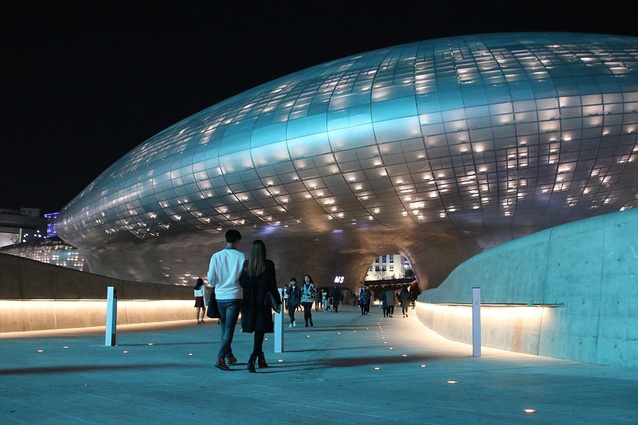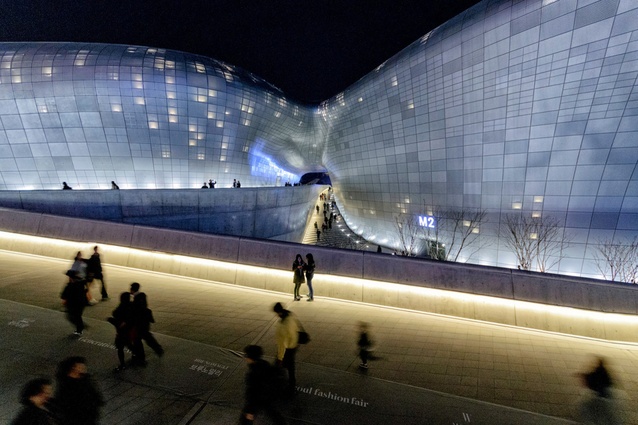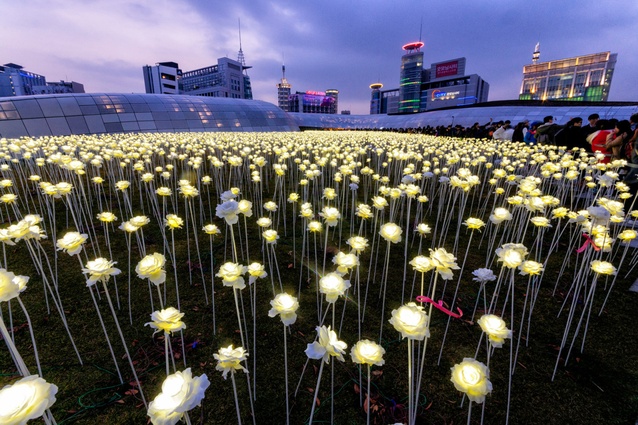Opinion: My first Zaha
Architectural graduate Sharon Lam writes of her experience with Zaha Hadid's Dongdaemun Design Plaza in central Seoul.
It is often easier, as an architecture student, to judge the work of a distant architect than the work of a classmate’s or one’s own. This can verge on arrogance, as in the example of myself.
In my fourth year of architecture school, I held the strong belief that I was too good for Zaha Hadid. But I’d say that I wasn’t the only one! She made it easy – one-note blobs, vague forms noncommittally pinched here and there, someone getting carried away in Parametrics 101 – classic Zaha-isms, a style and nothing more.
Then there were her dismissive comments over the poor conditions of migrant workers in Qatar, many who were involved in constructing her Al-Wakrah stadium. And yet, when most people think of architects who are women, they jump immediately to Zaha. If we’re lucky, perhaps Kazuyo Sejima as a follow up, only she would likely be referred to as ‘the SANAA lady’.
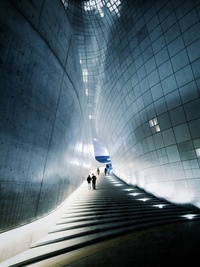
So, my self-made one-way beef with Zaha was complicated. But the crux of my beef lay with her designs. They objectively were pseudo-spacey and warpy, which isn’t a problem in itself but it was what they projected – an outdated notion of what a single person thought the future should look like – that irked me. It made no room for anything else.
Returning to my arrogance, I had arrived at this stance without ever having visited a Zaha Hadid building in person. Which is fair enough when you live at the bottom of the world! But in the middle of my fourth year, I found myself a little less at the bottom of the world in Seoul, South Korea. I knew that one of Hadid’s blobs lived in Seoul, with the blob’s name being the Dongdaemun Design Plaza. My chance to hate-visit one of her buildings was here.
Now, if you google Dongdaemun Design Plaza and aren’t always the most detail oriented (good thing that never comes up in architectural work), you will come across a lot of emphasis on how the DDP is in a 24-hour shopping district. So, with ‘24-hour’ and nothing else stuck in my head, when the day came for my travel partner and I to spend the day in the Dongdaemun area, we thought that Hadid would be best to see at the very end.
We got there around 10pm to find that it was closed. Oops. We would not be entering the soft-lit blobs in front of us. Perhaps it was the biological response to linger around the warm light in the dark, but it never crossed our mind to turn around and leave. Since we couldn’t go inside, we compensated by going everywhere outside. This turned out to be the best thing to ever happen for Zaha and my relationship.
The whole experience was like a very sensual parkour session – human bodies rolling across the building’s surface while the building rolled across its space. I wouldn’t be able to accurately describe or draw what the buildings looked like in still form, as in experience they seemed to move and change with time.
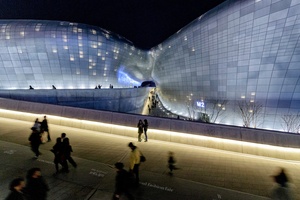
The entire area was lit up just enough by recessed strip lighting in concrete ridges supporting the blob, and by sharper, smaller headlights freckled inside the blob’s skin like glowing pores. The blobs did not sit, they languidly pooled, with ramps enticing you up, around and on top of it.
Some paths led us to what must have been balconies or roof-ish spaces connecting to now-closed-off indoor areas, where we tried to peek in through the windows. It was dark inside, not falsely lit up like an office building. I could just make out hints of more angular folds on the other side of the skin, forming seats and inner bridges.
Rather than feeling left out, this only increased the sense of expansiveness: the surfaces we were touching were built on another system of richness. It felt like we had been shrunken down, walking on the shiny head, or perhaps belly, of a deep sea Flubber-type creature, slowly getting to know them by walking through the channelled creases of their skin.
There was also an installation in the central landscaped area at the time, so the grass was flooded with long-stemmed LED roses. The higher up the blob’s embedded paths took us, the smaller the flowers looked below and the more abstract they became, the whole thing like some watering hole at night, mirroring the stars back towards the sky.
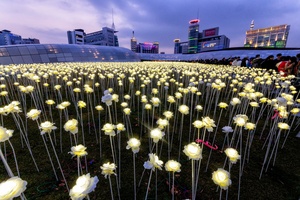
I say watering hole because we weren’t the only ones attracted to the place. Other little groups of people were doing what we were doing – strolling and stroking, learning as much as there was to learn about the building as building and nothing else. Not as a ‘cultural hub’, not as a design museum, but simply form and material.
There was one final discovery on our way out of the DDP. It was the only part of the building that had 24-hour access, the single open flap of an advent calendar on the first day of December. And it happened to be the real clincher of any building experience.
Perhaps not the room you’d pick if you could only visit one room, but it was the one room where even in the most populated of buildings you find yourself allowed to be alone – the toilets.
To this day, the one and only time I have truly been ‘inside’ a Zaha Hadid building was inside the DDP toilets. And it was wonderful. The walls and floors were tastefully tiled, the cubicle was spacious and had a strong hook, the doors swung the right way, there was no traffic jam between hand-washers and incomers, and there was a rarely generous ceiling height that made you feel like someone important. There was as much thought in here as there was out there.
As I sat down and did what I had to do, in my moment of aloneness I mentally apologised to Zaha. She had won me over. I had been too dismissive, for judging a building and a body of work only through sterile architectural photography. There was room for me and others amongst her blobs.

